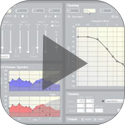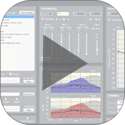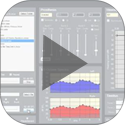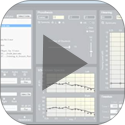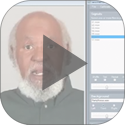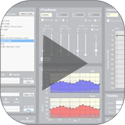HeLPS is a powerful software tool designed for audiologists to help their clients and clients’ families make informed hearing-health choices. An easy-to-use interface enables interactive demonstrations of the communication difficulties caused by individual hearing losses and the improvements possible with custom-fit hearing aids or cochlear implants. High-quality audio-visual speech presentations clearly demonstrate the importance of lipreading, while control of hearing aid characteristics, background noise, and reverberation produce realistic simulations.
HeLPS is designed for a variety of uses by audiologists.
- In pediatric audiology, HeLPS gives parents insight into their child’s hearing loss and the improvements possible with appropriate aid or implant options.
- In adult aural rehabilitation, HeLPS provides hearing aid candidates with a preview of amplification and the options available with hearing aids.
- In family counseling, HeLPS demonstrates to family members the communication difficulties faced by their loved one, the importance of lipreading and speaking clearly for assistance in communication, and the improvements that are possible with hearing aids or cochlear implants.
- In hearing conservation and public education, HeLPS heightens awareness of the effects of hearing loss and thereby promotes careful listening habits and the use of hearing protection.
- In professional education, HeLPS provides audiology and deaf-education students valuable insights that come from directly experiencing the disability with which they will work as clinicians and teachers.
The Hearing Journal published an article by Patrick M. Zurek and Joseph G. Desloge (of Sensimetrics Corporation) in its July 2007 issue entitled “Hearing loss and prosthesis simulation in audiology”.
Hearing Products Report has published an Industry Q&A piece with Patrick M. Zurek, President of Sensimetrics, on the release of HeLPS: The Hearing Loss and Prosthesis Simulator. The article, in the September 2006 issue, is entitled “Understanding Hearing Loss through Simulation”.
Sensimetrics has created a brief video entitled “Preserving Your Hearing” that illustrates how HeLPS simulations can be used to demonstrate the consequences of damaged hearing. This video, which is geared towards an audience of young music listeners, is made available here as a public service to promote responsible listening habits.
Hardware Requirements
- Intel Core 2 Duo (equivalent) or better
- Microsoft Windows® 7/8/10
- 2GB RAM
- 300MB of available hard-disk space
- 1024×768 monitor resolution or higher


